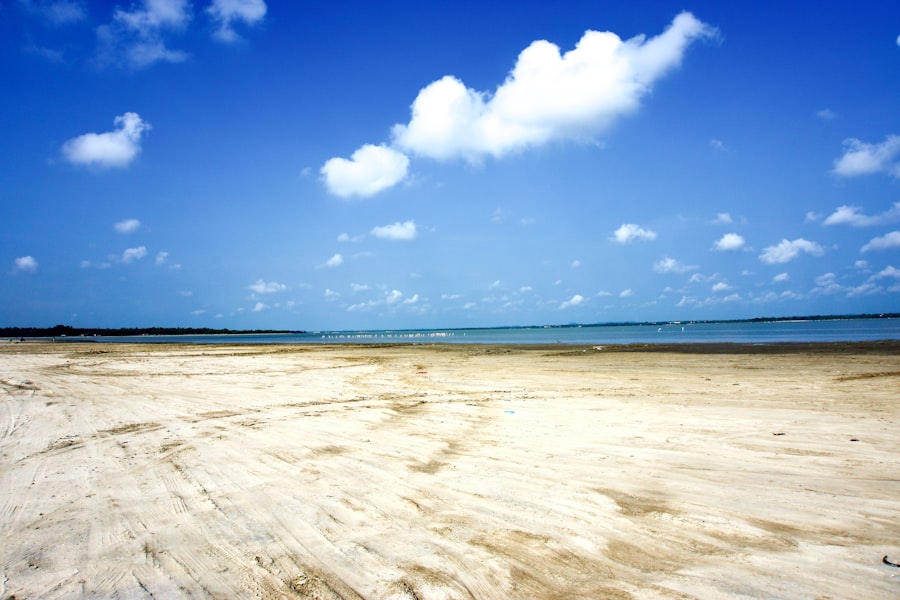Download links
How to install Rediscovering Paradise: Boracay's Timeless Beauty APK?
1. Tap the downloaded Rediscovering Paradise: Boracay's Timeless Beauty APK file.
2. Touch install.
3. Follow the steps on the screen.
Description
Boracay, a small island in the Philippines, has a rich and varied history that reflects the broader narrative of the archipelago itself. Originally inhabited by indigenous groups, the island was relatively unknown to the outside world until the late 20th century. The first recorded mention of Boracay dates back to the 1970s when it was discovered by backpackers and adventurous travelers seeking unspoiled beauty.
The island’s powdery white sand beaches and crystal-clear waters quickly captured the attention of tourists, leading to its gradual rise as a premier destination. As tourism began to flourish, Boracay underwent significant transformations. The influx of visitors brought economic opportunities but also posed challenges to the island’s environment and local culture.
By the early 2000s, Boracay had become a bustling hub for both local and international tourists, with numerous establishments catering to the growing demand for accommodations, dining, and entertainment. However, this rapid development came at a cost, leading to environmental degradation and concerns over sustainability. The island’s history is thus marked by a dual narrative of growth and preservation, as stakeholders grappled with the balance between economic development and environmental conservation.
Key Takeaways
- Boracay has a rich history dating back to the 1940s when it was discovered by travelers and settlers.
- The environmental rehabilitation of Boracay in 2018 aimed to restore the island’s natural beauty and address issues of overdevelopment and pollution.
- Boracay is home to pristine white sand beaches that attract tourists from around the world.
- The exquisite marine life in Boracay offers opportunities for snorkeling and diving in crystal-clear waters.
- The thriving local culture of Boracay is showcased through traditional dances, music, and cuisine, providing a unique experience for visitors.
The Environmental Rehabilitation of Boracay
In 2018, Boracay was thrust into the global spotlight when the Philippine government announced a six-month closure of the island for rehabilitation. This unprecedented move aimed to address the severe environmental issues that had arisen due to overdevelopment and unregulated tourism. During this period, authorities undertook extensive measures to restore the island’s natural beauty and ecological balance.
Waste management systems were overhauled, illegal structures were demolished, and strict regulations were implemented to protect the fragile ecosystems. The rehabilitation efforts were not merely cosmetic; they involved a comprehensive approach to environmental management. For instance, the government focused on improving water quality by upgrading sewage treatment facilities and enforcing stricter regulations on waste disposal.
The results of these initiatives have been promising, with reports indicating significant improvements in water clarity and overall environmental health. The rehabilitation of Boracay serves as a case study for other tourist destinations grappling with similar challenges, highlighting the importance of sustainable practices in preserving natural resources.
The Pristine Beaches of Boracay

Boracay is renowned for its stunning beaches, particularly White Beach, which is often cited as one of the best beaches in the world.
Visitors can bask in the sun during the day and enjoy vibrant nightlife as the sun sets, creating a dynamic experience that caters to various preferences. Beyond White Beach, Boracay boasts several other picturesque shorelines worth exploring. Puka Shell Beach, located on the northern part of the island, offers a more tranquil setting with its unique puka shells scattered along the shore.
This beach is less commercialized than White Beach, making it an ideal spot for those seeking solitude amidst nature’s beauty. Additionally, Bulabog Beach is famous for its water sports activities, particularly kite surfing and windsurfing, attracting adventure enthusiasts from around the globe. Each beach on Boracay presents its own charm and allure, contributing to the island’s reputation as a tropical paradise.
The Exquisite Marine Life of Boracay
| Marine Life | Species | Size | Color |
|---|---|---|---|
| Coral Reefs | Various types | Varies | Various colors |
| Fish | Clownfish, Parrotfish, Angelfish, etc. | Varies | Various colors |
| Sea Turtles | Green sea turtle, Hawksbill sea turtle | Varies | Green, brown, etc. |
| Sea Stars | Chocolate chip sea star, Crown-of-thorns sea star | Varies | Various colors |
The waters surrounding Boracay are teeming with diverse marine life, making it a haven for snorkeling and diving enthusiasts. The coral reefs that lie just offshore are home to an array of species, including vibrant tropical fish, sea turtles, and even occasional sightings of larger marine mammals like dolphins. The richness of Boracay’s underwater ecosystem is attributed to its strategic location within the Coral Triangle, an area recognized for its unparalleled marine biodiversity.
Diving spots such as Crocodile Island and Yapak are particularly popular among divers seeking to explore the underwater wonders of Boracay. These sites offer breathtaking views of coral gardens and schools of fish darting through the water. Moreover, conservation efforts have been initiated to protect these vital ecosystems from threats such as coral bleaching and overfishing.
Local organizations work tirelessly to promote awareness about marine conservation and engage both tourists and residents in sustainable practices that safeguard Boracay’s aquatic treasures.
The Thriving Local Culture of Boracay
Boracay’s local culture is a vibrant tapestry woven from the traditions and customs of its indigenous inhabitants and influences from various cultures brought by tourism. The island’s residents are known for their warm hospitality and friendliness, which enhances the overall experience for visitors. Local festivals such as Ati-Atihan showcase traditional music, dance, and colorful costumes that reflect the rich heritage of the Aklanons, the people native to Aklan province where Boracay is located.
Culinary experiences in Boracay also highlight its cultural diversity. Local dishes such as “chicken inasal” (grilled chicken marinated in vinegar) and “sinigang” (a sour soup) are popular among both locals and tourists alike. Street food vendors offer an array of snacks like “kwek-kwek” (quail eggs coated in orange batter) and “isaw” (grilled chicken intestines), providing an authentic taste of Filipino cuisine.
Engaging with local artisans who create handicrafts from indigenous materials further enriches visitors’ understanding of Boracay’s cultural landscape.
The Sustainable Tourism Initiatives in Boracay

In response to the environmental challenges faced by Boracay, various sustainable tourism initiatives have been implemented to ensure that tourism development aligns with ecological preservation. One notable initiative is the establishment of eco-friendly resorts that prioritize sustainability in their operations. These resorts often utilize renewable energy sources, implement waste reduction strategies, and promote responsible tourism practices among their guests.
Additionally, local government units have introduced programs aimed at educating both tourists and residents about environmental stewardship. Beach clean-up drives and coral reef restoration projects encourage community involvement while fostering a sense of responsibility towards preserving Boracay’s natural beauty. By promoting sustainable tourism practices, Boracay aims to create a model for other destinations grappling with similar issues, demonstrating that economic growth can coexist with environmental protection.
The Luxurious Resorts and Accommodations in Boracay
Boracay is home to an impressive array of luxurious resorts and accommodations that cater to discerning travelers seeking comfort and elegance amidst stunning natural surroundings. High-end establishments such as Shangri-La’s Boracay Resort and Spa offer private villas with breathtaking views of the ocean, complete with personal pools and direct beach access. These resorts often feature world-class amenities including spas, gourmet dining options, and personalized services that elevate the guest experience.
In addition to luxury resorts, boutique hotels and eco-friendly lodges provide unique alternatives for travelers looking for something different. Many of these accommodations emphasize sustainability while offering stylish designs that blend seamlessly with their natural surroundings. For instance, some resorts incorporate local materials into their architecture or support community initiatives by sourcing products from local artisans.
This diversity in accommodations allows visitors to choose options that align with their preferences while contributing positively to the local economy.
The Exciting Activities and Attractions in Boracay
Boracay offers an abundance of activities and attractions that cater to a wide range of interests, ensuring that every visitor finds something enjoyable during their stay. Water sports are among the most popular pursuits on the island; activities such as parasailing, jet skiing, and paddleboarding provide thrilling experiences against the backdrop of stunning seascapes. For those seeking adventure on land, ATV rides through scenic trails offer an exhilarating way to explore Boracay’s lush interior.
Cultural experiences also abound on the island; visitors can participate in traditional Filipino cooking classes or attend local craft workshops where they can learn about indigenous art forms such as weaving or pottery. Nightlife in Boracay is another highlight; beachfront bars come alive after sunset with live music performances and vibrant parties that attract both locals and tourists alike. Whether one seeks relaxation or adventure, Boracay presents a myriad of options that cater to diverse tastes and preferences, solidifying its status as a premier travel destination in Southeast Asia.
If you’re looking for a break from the hustle and bustle of city life, consider visiting the beautiful island of Boracay in the Philippines. With its stunning white sand beaches and crystal-clear waters, Boracay is the perfect destination for a relaxing getaway. While you’re there, be sure to check out the article on Call of Duty: Warzone Mobile here for some gaming inspiration during your downtime on the beach.
FAQs
What is Boracay?
Boracay is a small island in the Philippines known for its beautiful white sand beaches and clear blue waters. It is a popular tourist destination for its stunning natural beauty and vibrant nightlife.
What are the popular activities in Boracay?
Some popular activities in Boracay include swimming, snorkeling, scuba diving, kite surfing, and island hopping. The island also offers a variety of restaurants, bars, and shops for visitors to enjoy.
When is the best time to visit Boracay?
The best time to visit Boracay is during the dry season, which typically runs from November to April. This is when the weather is most pleasant and the waters are calm, making it ideal for beach activities.
Is Boracay family-friendly?
Yes, Boracay is a family-friendly destination with plenty of activities and accommodations suitable for families. The island offers a range of options for visitors of all ages, including kid-friendly beaches and resorts.
Are there any environmental regulations in Boracay?
Yes, in 2018, the Philippine government closed Boracay for six months to undertake major environmental rehabilitation efforts. Since then, the island has implemented strict regulations to protect its natural resources, including limits on the number of visitors and activities allowed on the island.





